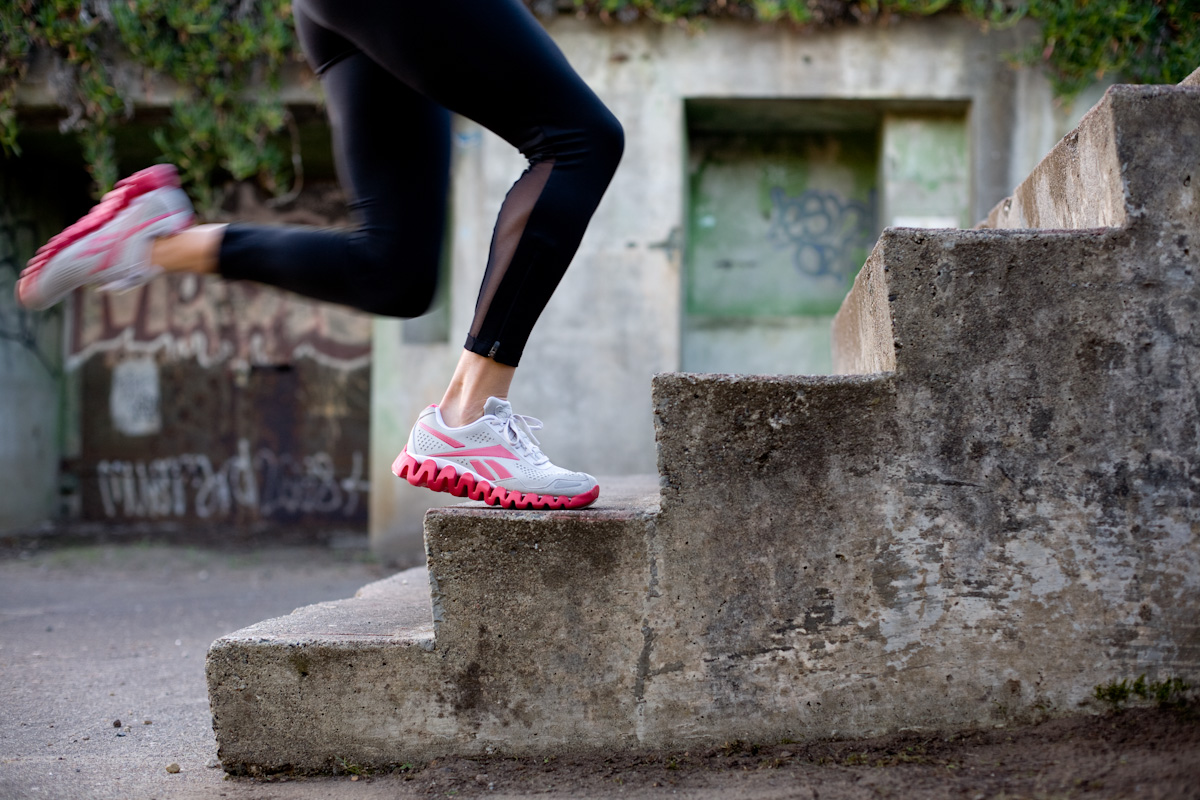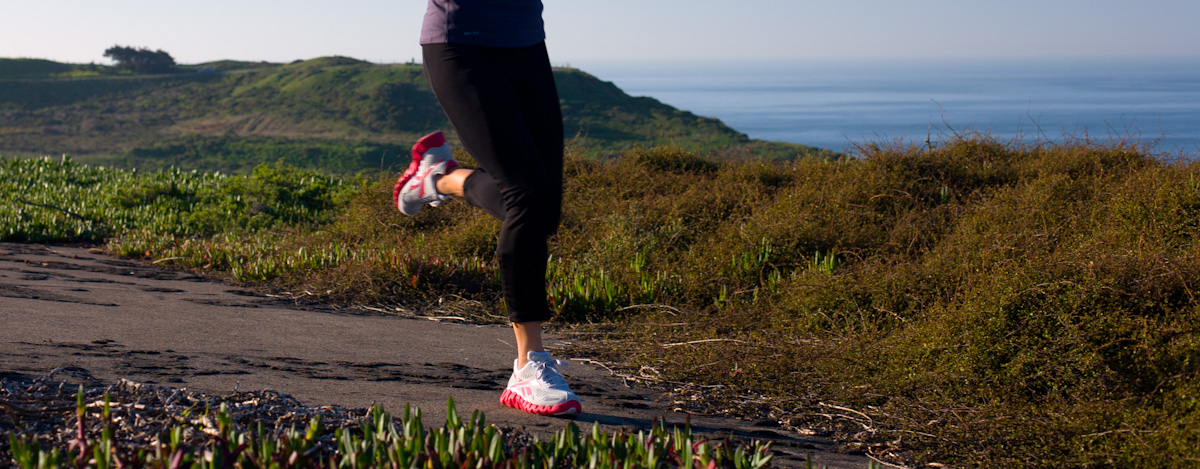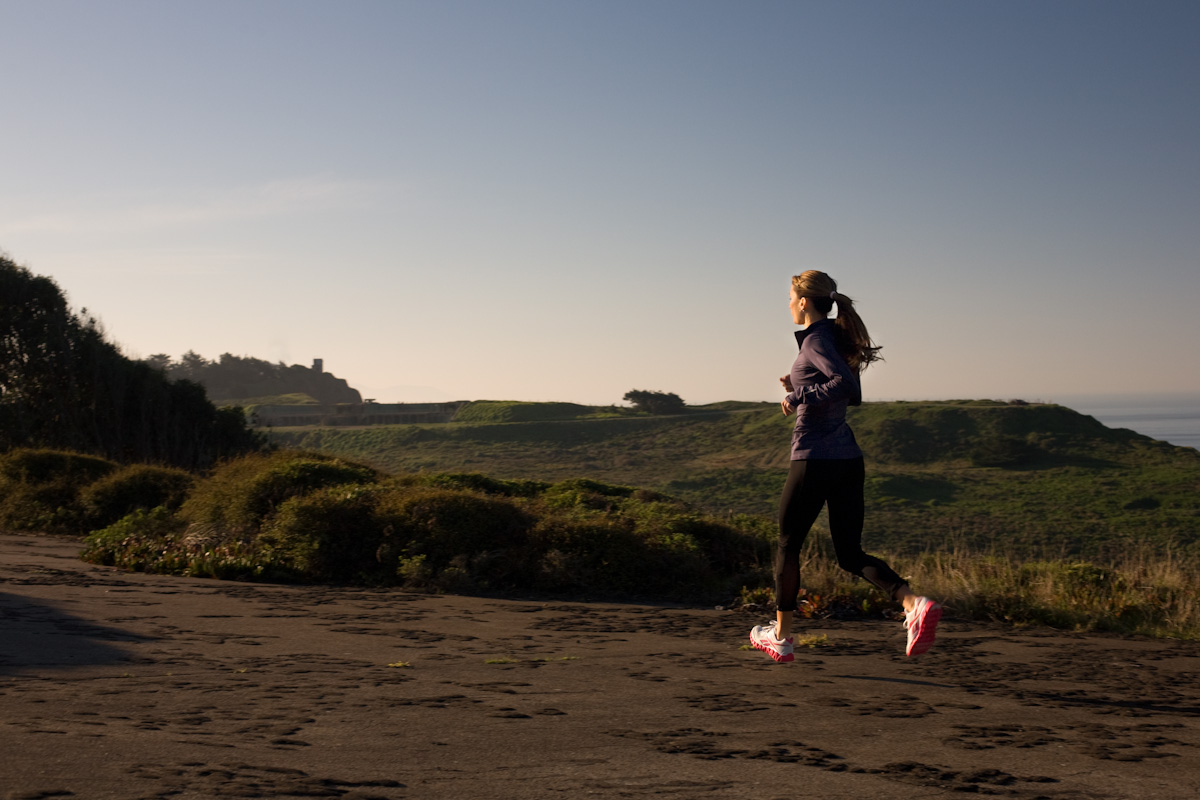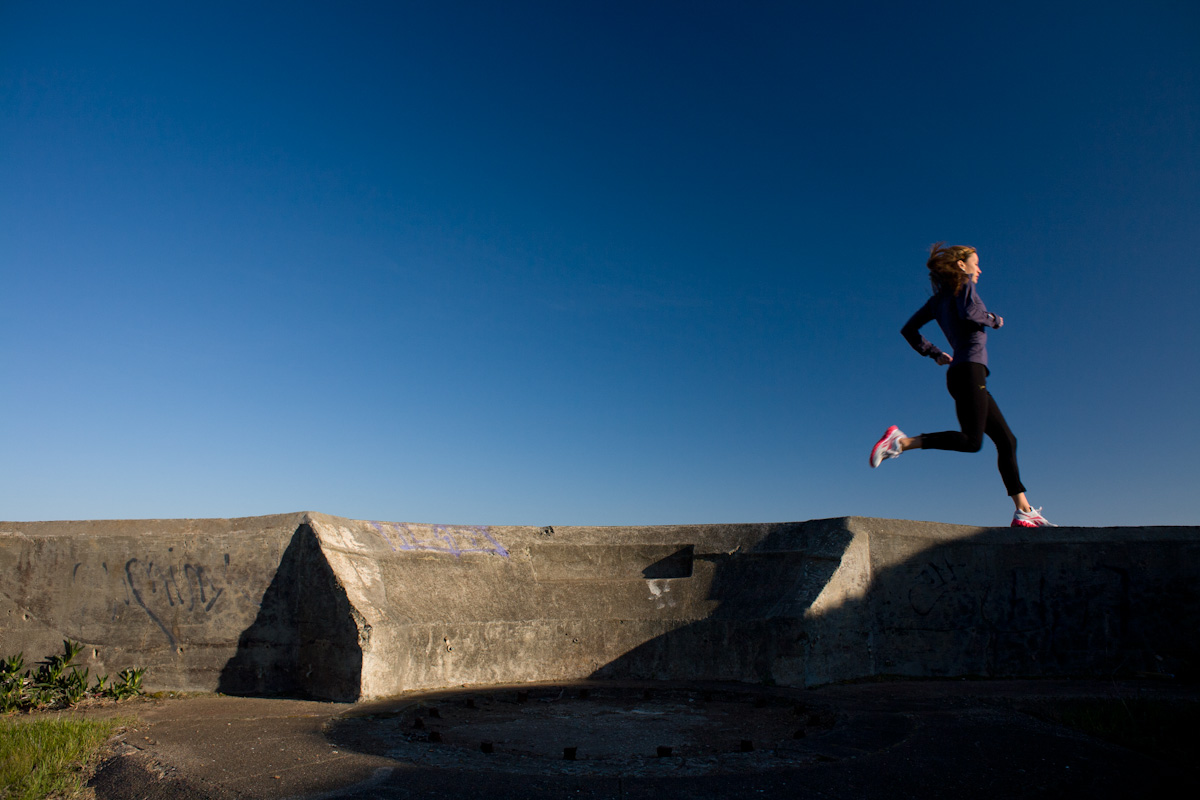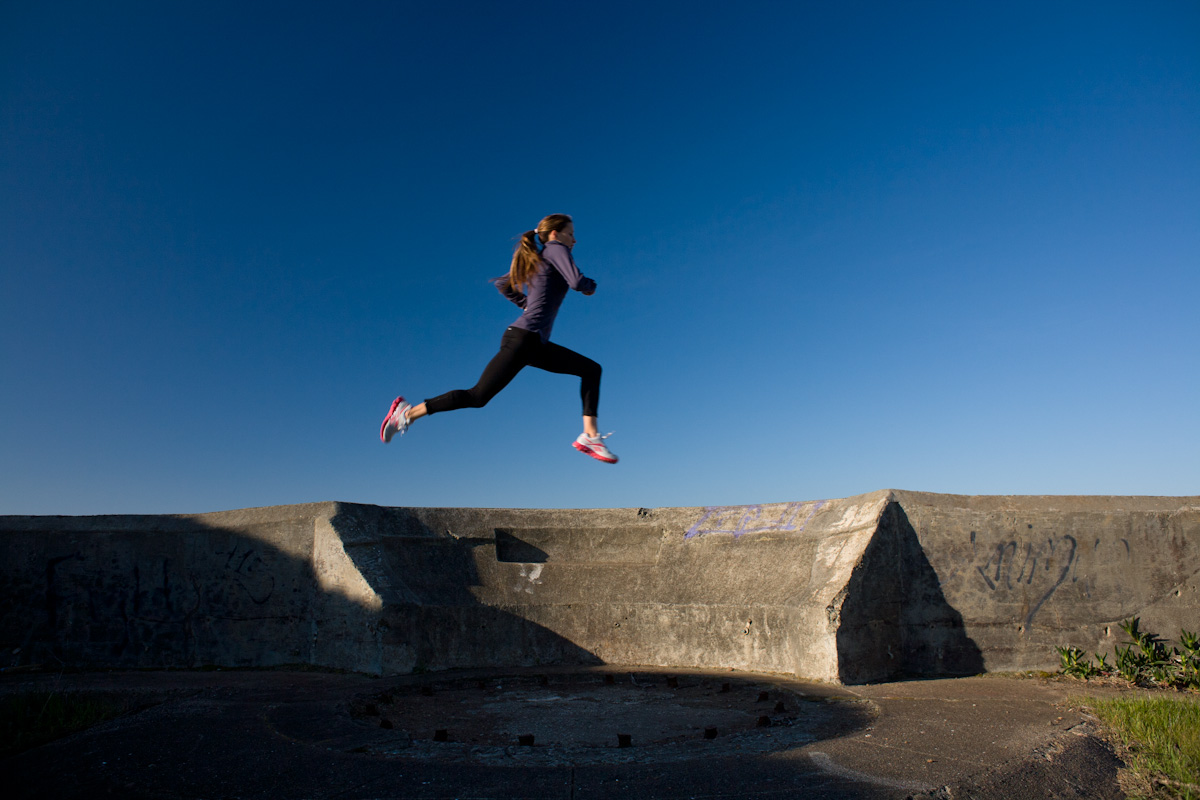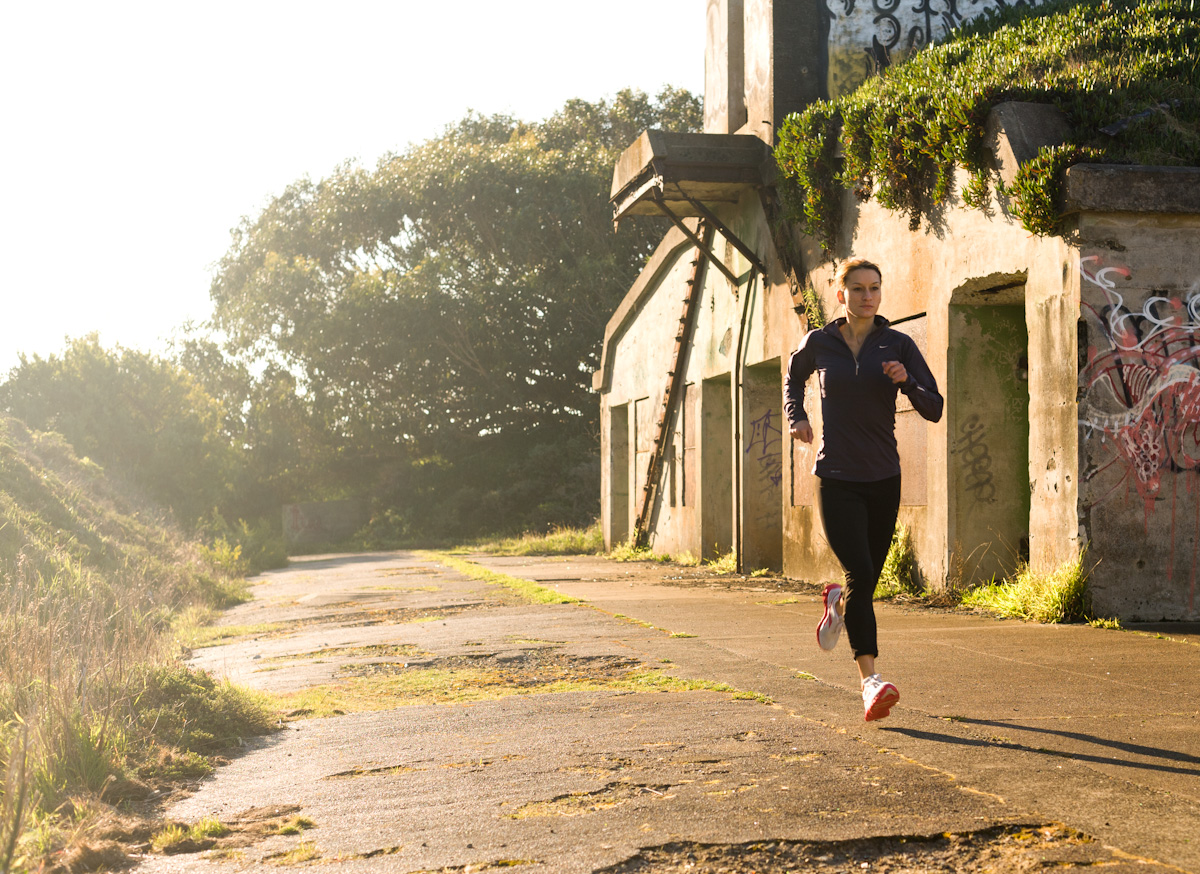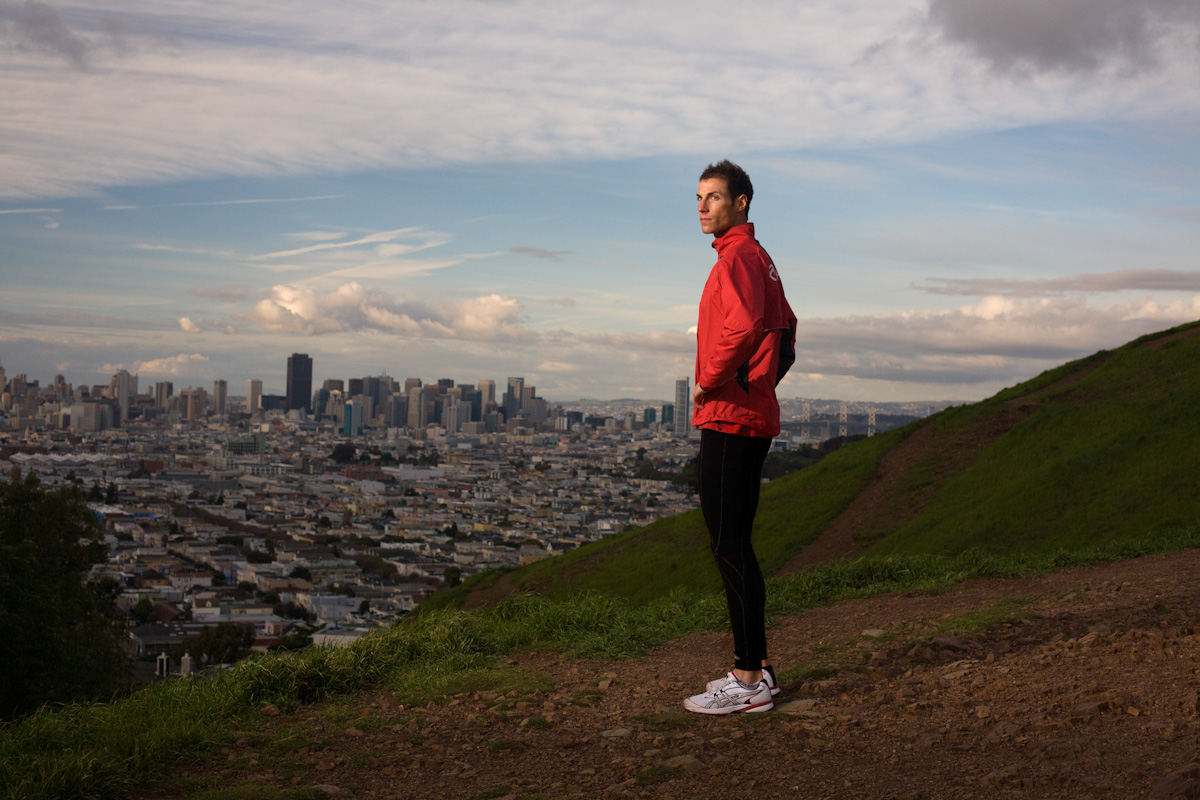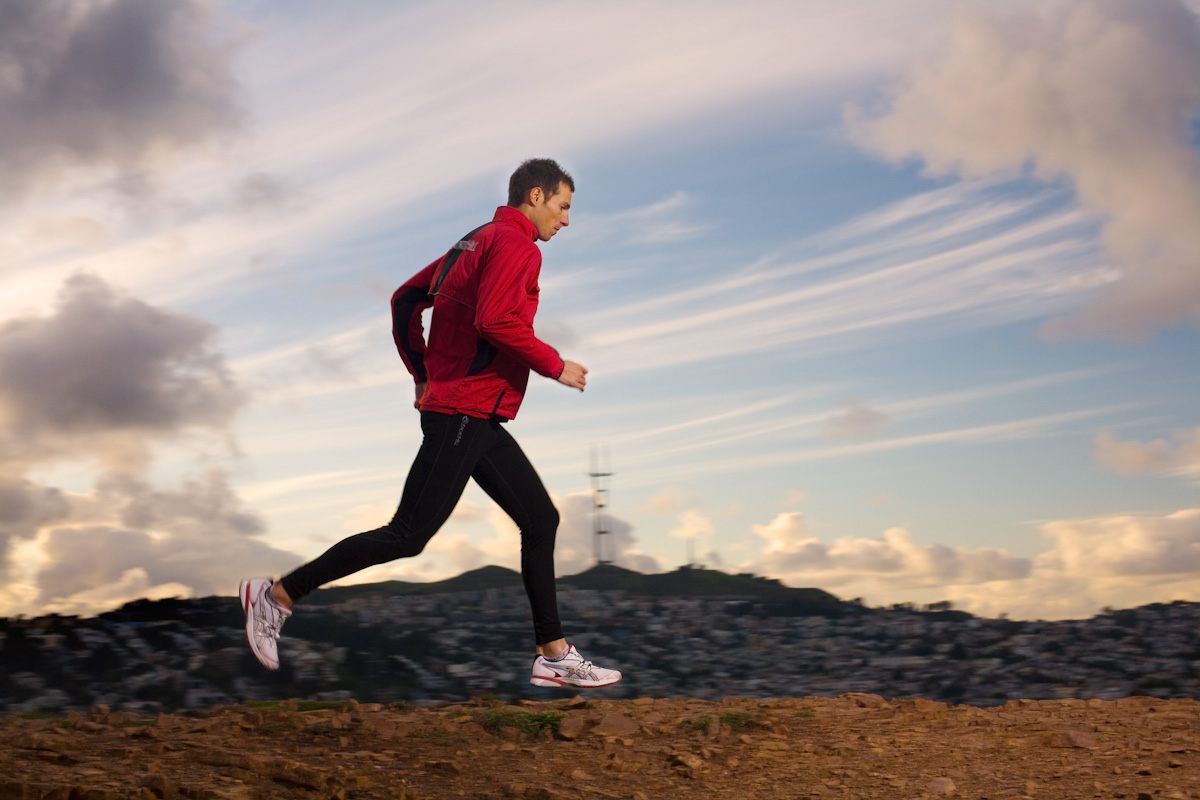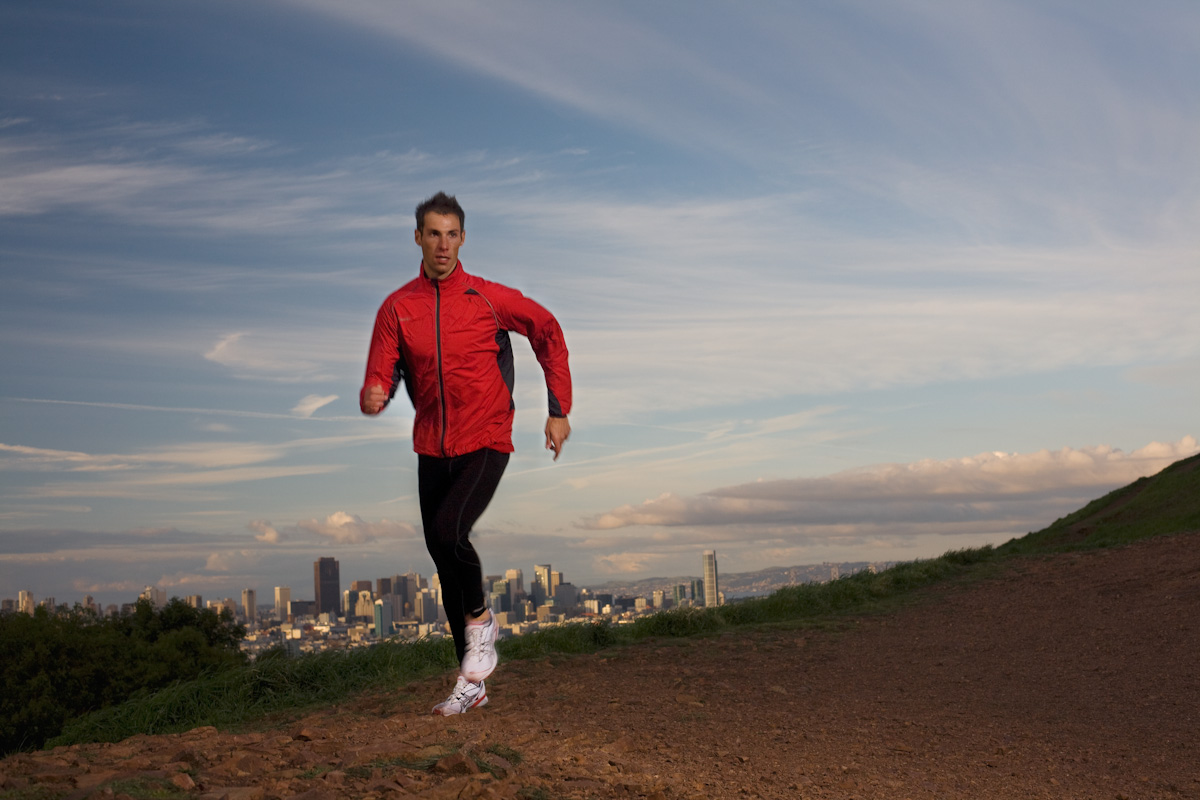Running
Took a step outside to do some more running shots.... I wanted to create charts in landscapes, to suggest performance improvement, challenge, increasing difficulty, that kind of thing. So far, people are having a hard time seeing the charts, so I s'pose I should be glad I didn't get to the Venn diagram.
Had superb weather out at Battery Alexander. It was hard to find stairs I liked, without a railing, going in the right direction, but Ron found them. I loved the gritty feel as well.
We had to delay the Bernal Hill shoot one day, because of rain. But the following day was a major show with all the fast-moving clouds. This black hill shot fairly heavily photoshopped, as I didn't get a figure/clouds combination that I truly liked, but all these other shots are not too different from the way I shot them.
And now...with actual people. I figured since I was at these lovely places with these great models I ought to get some pickup stuff. I felt totally out of my element, so that was good.
It feels pretty strange to work with available light. I wanted to just be loose, not even use fill. It's certainly uncomplicated, but of course you're limited in the things you can do. It was kind of nice, but I don't know if I want to make a career out of it. I actually prefer adjusting lighting obsessively.
I used strobe on these shots, and didn't worry too much about things looking natural. It's not really my milieu, after all. Natural, I mean.
Big thanks to models Sarah Hallas, Erich Wegscheider, assistants Jamey Thomas, Karl Nielsen, and location scout Ron Ison.
Shun Knives
I got ahold of these beautiful knives, and tried a few different approaches. I'm still mainlining sexy lighting on black, but I can quit anytime, really. Still wanting to move my focus to composition, so the easiest way for me to force that is to incorporate multiple elements. A really simple composition, but a composition nonetheless.
Of course, moving in a new direction usually results in some stumbling. I think this is really corny.
And this is probably overkill on the logo treatment. Especially for this brand, which is pretty staid. I can't even find a proper company website for them. Interestingly, while looking for one, I discovered that you can ship them the knives, and they will sharpen them, and mail them back to you, for free. Nice.
I like this one a lot. It may just be the Jolly Rancher red background though.
That's a japanese-style paper in the background. Another gigantic departure for Rob Prideaux.
These knives are incredibly sharp - my hands were covered with fine cuts by the time I'd finished, and using them is effortless, as if the weight of the blade is enough to push the knife through the food. And I think I've managed to show the sharpness, quality, and desirability of these knives.
Now I've got some chopping to do.
Studio on Location, Part Two
Track spikes have always fascinated me. They're so singular in purpose. Maybe that's why the designers go nuts, but it's hard to find a wallflower track spike.
The Asics Japan Lite-Ning 2 is no wallflower. For this shoe I wanted a stadium backdrop. I scouted various tracks: Stanford, Kezar, USF, SFSU, and City College was the best. They recently built themselves a new complex, with a track, a football field, a stadium, and a fitness center. It's really nice and really new.
Trying to get permission to shoot, I was getting nowhere talking to them on the phone, so I hopped on down there with my portfolio and my enthusiasm and had permission in short order (thanks Martha and Dan!).
Meanwhile, I planned my lighting setup at home.
Later that week, Emily Polar, Kim Olson, and I overloaded Emily's Subaru with gear. We set up the shoes on the track...
...and built a crazy looking lighting setup all around it, had a nice dinner, and waited for the ambient light to be right.
I think the obvious question here is why? Why not just shoot the background, then shoot the shoes, then composite. Especially since I've gone with this very dramatic, unrealistic lighting.
And the answer is: it just doesn't look right composited. It may look cool, compelling, interesting, flashy, or, these days, totally-run-of-the-mill, but it doesn't look right. Although I almost totally overpowered the ambient light on the shoes, there is still some ambient there. Also, there's an interaction with the edges of the shoes and the background that would take God-like knowledge to even know you'd need to replicate it.
Finally, there's the interaction between the object and the place and the crew and the day. And this is all-important and this cannot be faked.
Studio on Location, Part One
Lately I've been hating Photoshop...working in it, as well as looking at the results. There's so much bad compositing in the world, and even the good compositing is starting to look stale. Of course, compositing probably won't go away, and done well, it's compelling, particularly allowing depiction of something that's otherwise not possible (physically, not financially). It's pushed me to wonder if there's another way. And of course, there is! The way people did it in the old days. Five years ago. Furthermore, I've been interested in doing the same kind of lighting, in the field, as I do in the studio. Of course this complicates things. In addition to the ordinary studio variables, add changing ambient light, wind, dust, passersby, permits, uneven surfaces, etc.

The thing that killed us on this one was hauling 200 pounds of gear 20 minutes up the trail. Much thanks to two local heroes - Clint and Michael, my assistants who schlepped gear, prevented a pair of dogs from running through the set, held flags, and were otherwise great.





